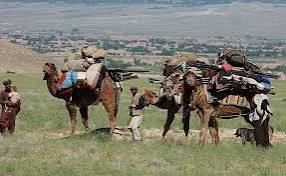The influx of nomads into the central and northern regions of Afghanistan

The influx of nomads into the central and northern regions of Afghanistan is one of the complex and historical issues in this country, which has caused ethnic, social, and political tensions. This is due to various reasons, including grazing of agricultural land, natural resources, and government policies in Afghanistan. Some of the key problems that have arisen as a result of this invasion are:
-
Conflict over land and resources: One of the main reasons for tensions is disputes over land and natural resources. As a nomadic group, the Kuchis migrate to the agricultural lands of the central and northern regions (mainly inhabited by the Hazara and Tajik people) to graze their livestock. This issue has caused disputes and even violent conflicts between local farmers and nomads.
-
Ethnic and religious conflicts: The influx of nomads to these areas is often considered as an ethnic and religious issue. The Kochi are mainly Pashtun and Sunni Muslims, while the inhabitants of central Afghanistan, especially in Bamyan and Daikundi provinces, are mainly Hazara and Shia. These ethnic and religious differences have added to the complexity of tensions and have led to ethnic conflicts in some cases.
-
Government policies: Some Afghan governments, especially during the periods when the Pashtuns ruled the government, have supported the rights of the nomads and even granted them additional land. These policies have led to feelings of dissatisfaction and injustice among local residents, and in some cases have reinforced the belief that nomads are being used as political tools to oppress other ethnic groups.

-
Environmental effects: The invasion of nomads and the excessive grazing of their livestock can lead to the destruction of agricultural lands and pastures. This issue leads to a decrease in food resources, a decrease in the income of local farmers and an increase in economic problems in these areas.
-
Violence and Instability: In many cases, these disputes have led to armed conflicts between the nomads and local residents. In addition to loss of lives, these conflicts also lead to regional instability and weakening of local security.
-
Lack of sustainable solutions: So far, no comprehensive and sustainable solutions have been provided to solve these disputes. The government’s efforts to mediate or divide the lands have not been successful and tensions continue. In addition, climate change and increased competition over natural resources bring the possibility of more conflicts.
In general, the influx of nomads into the central and northern regions of Afghanistan is a complex issue that requires serious efforts to resolve it peacefully. Collaboration between the government, local community, and nomads is essential to find fair and sustainable solutions.